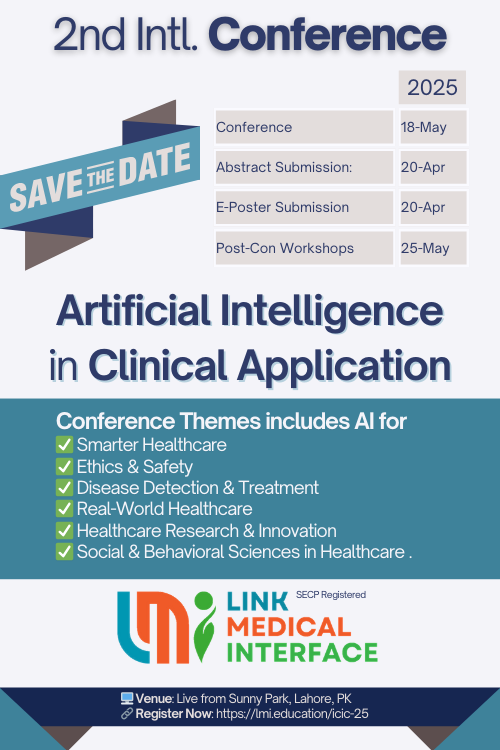Awareness of Premenstrual Syndrome and Its Impact on the Severity of Menstrual Distress in Adolescents: A Cross-Sectional Study from Karachi, Pakistan
DOI:
https://doi.org/10.61919/jhrr.v4i3.1852Keywords:
Premenstrual Syndrome, Menstrual Distress, Adolescents, Awareness, Menstrual Health Education, KarachiAbstract
Background: Menstrual distress and premenstrual syndrome (PMS) significantly affect adolescents’ physical and emotional well-being, yet awareness remains limited in developing countries. Awareness may improve symptom recognition but could also amplify perceived distress due to heightened attention to bodily changes. Understanding this relationship is crucial for designing effective menstrual health education strategies. Objective: To determine the association between awareness of PMS and the severity of menstrual distress symptoms among adolescent females in Karachi, Pakistan. Methods: A cross-sectional study was conducted among 125 female students aged 16–20 years recruited from intermediate colleges in Karachi using convenience sampling. Data were collected using the Shortened Menstrual Distress Questionnaire (SMDQ) assessing symptoms across three menstrual phases—premenstrual, menstrual, and intermenstrual. Participants were categorized based on PMS awareness. Independent-sample t-tests and effect size analyses (Cohen’s d) compared mean SMDQ scores between groups, with significance set at p<0.05. Results: Only 24% of participants were aware of PMS. Those aware reported significantly higher total SMDQ scores during menstruation (59.5 ± 25.5 vs. 46.9 ± 25.6; p=0.02; d=0.47), as well as higher pain (p<0.01; d=0.63) and autonomic reactions (p<0.01; d=0.61). Differences before menstruation and during the rest of the cycle were nonsignificant. Conclusion: PMS awareness among adolescents was associated with increased perception and reporting of menstrual distress, particularly during menstruation. Educational programs should aim to enhance balanced awareness that fosters recognition while promoting adaptive coping strategies to mitigate distress
Downloads
References
Critchley H, Babayev E, Bulun SE, Clark S, Garcia-Grau I, Gregersen PK, et al. Menstruation: Science and Society. Am J Obstet Gynecol. 2020;223(5):624–64.
Critchley HOD, Maybin JA, Armstrong GM, Williams ARW. Physiology of the Endometrium and Regulation of Menstruation. Physiol Rev. 2020;100(3):1149–79.
Moos RH. The Development of a Menstrual Distress Questionnaire. Psychosom Med. 1968;30(6):853–67.
Ryu A, Kim TH. Premenstrual Syndrome: A Mini Review. Maturitas. 2015;82(4):436–40.
Modzelewski S, Oracz A, Żukow X, Iłendo K, Śledzikowka Z, Waszkiewicz N. Premenstrual Syndrome: New Insights Into Etiology and Review of Treatment Methods. Front Psychiatry. 2024;15:1363875.
American College of Obstetricians and Gynecologists. Management of Premenstrual Disorders: ACOG Clinical Practice Guideline No. 7. Obstet Gynecol. 2023;142(6):1516–33.
Freeman EW. Premenstrual Syndrome and Premenstrual Dysphoric Disorder: Definitions and Diagnosis. Psychoneuroendocrinology. 2003;28(Suppl 3):25–37.
Yoshimi K, Inoue F, Odai T, Shirato N, Watanabe Z, Otsubo T, et al. Practical Diagnosis and Treatment of Premenstrual Syndrome and Premenstrual Dysphoric Disorder by Psychiatrists and Obstetricians/Gynecologists in Japan. PCN Rep. 2024;3(3):e234.
Delara M, Ghofranipour F, Azadfallah P, Tavafian SS, Kazemnejad A, Montazeri A. Health-Related Quality of Life Among Adolescents With Premenstrual Disorders: A Cross-Sectional Study. Health Qual Life Outcomes. 2012;10:1.
Ali TS, Rizvi SN. Menstrual Knowledge and Practices of Female Adolescents in Urban Karachi, Pakistan. J Adolesc. 2010;33(4):531–41.
Matsumoto T, Ushiroyama T, Morimura M, Moritani T, Hayashi T, Suzuki T, et al. Autonomic Nervous System Activity in the Late Luteal Phase of Eumenorrheic Women With Premenstrual Symptomatology. J Psychosom Obstet Gynaecol. 2006;27(3):131–9.
Daneshvar S, Ahmadi F, Naghizadeh MM, Direckvand-Moghadam A, Mohammadian F, Jalilian M, et al. Effectiveness of a School-Based Health Education Program to Improve the Symptoms of Premenstrual Syndrome in High School Girls in Ilam. J Educ Health Promot. 2023;12:126.
Cholbeigi E, Rezaienik S, Safari N, Lissack K, Griffiths MD, Alimoradi Z. Are Health Promoting Lifestyles Associated With Pain Intensity and Menstrual Distress Among Iranian Adolescent Girls? BMC Pediatr. 2022;22:574.
Burger HG. The Endocrinology of the Menopause. J Steroid Biochem Mol Biol. 1999;69(1–6):31–5.
Burger HG, Hale GE, Robertson DM, Dennerstein L. A Review of Hormonal Changes During the Menopausal Transition: Focus on Findings From the Melbourne Women's Midlife Health Project. Hum Reprod Update. 2007;13(6):559–65.
Maqbool R, Maqbool M, Zehravi M, Ara I. Menstrual Distress in Females of Reproductive Age: A Literature Review. Int J Adolesc Med Health. 2021;34(2):11–7.
Direkvand-Moghadam A, Sayehmiri K, Delpisheh A, Kaikhavani S. Epidemiology of Premenstrual Syndrome (PMS)—A Systematic Review and Meta-Analysis Study. J Clin Diagn Res. 2014;8(2):106–9.
Yonkers KA, O’Brien PMS, Eriksson E. Premenstrual Syndrome. Lancet. 2008;371(9619):1200–10.
Rafique N, Al-Sheikh MH. Prevalence of Menstrual Problems and Their Association With Psychological Stress in Young Female Students Studying Health Sciences. Saudi Med J. 2018;39(1):67–73.
Matsumoto T, Ushiroyama T, Moritani T, Hayashi T, Suzuki T, Tatsumi N. Autonomic Function and Premenstrual Symptoms in Women. J Psychosom Obstet Gynaecol. 2006;27(3):131–9.
Daneshvar S, Ahmadi F, Direckvand-Moghadam A, Naghizadeh MM, Mohammadian F, Jalilian M, et al. School-Based Health Education Program Reduces Premenstrual Syndrome Symptoms in Adolescents. J Educ Health Promot. 2023;12:126.
Maqbool R, Zehravi M, Ara I. Menstrual Distress and Its Sociocultural Dimensions in South Asia. Int J Adolesc Med Health. 2022;34(4):11–7.
Direkvand-Moghadam A, Delpisheh A, Sayehmiri K. Prevalence and Impact of Premenstrual Syndrome Among Adolescents: A Meta-Analysis. J Res Health Sci. 2014;14(3):248–58.
Downloads
Published
How to Cite
Issue
Section
License
Copyright (c) 2024 Zahira Qaimdin, Poonam Mahraj, Rubab Naeem, Muhammad Ajmal Jamil, Arslan Ghafar, Kamlesh Kumar

This work is licensed under a Creative Commons Attribution 4.0 International License.
Public Licensing Terms
This work is licensed under the Creative Commons Attribution 4.0 International License (CC BY 4.0). Under this license:
- You are free to share (copy and redistribute the material in any medium or format) and adapt (remix, transform, and build upon the material) for any purpose, including commercial use.
- Attribution must be given to the original author(s) and source in a manner that is reasonable and does not imply endorsement.
- No additional restrictions may be applied that conflict with the terms of this license.
For more details, visit: https://creativecommons.org/licenses/by/4.0/.






